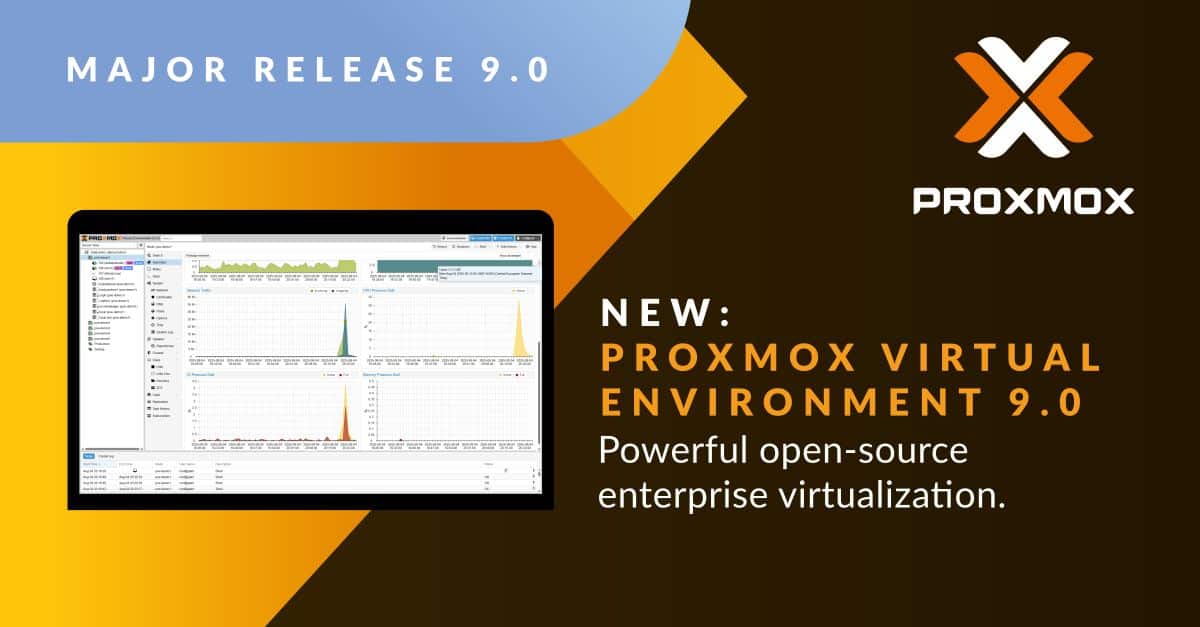Proxmox Virtual Environment version 9.0 is now official, marking a significant step in the evolution of this increasingly popular open-source virtualization platform as a viable alternative to commercial solutions like VMware vSphere and Microsoft Hyper-V. Key updates include independent storage provider snapshots, enhancements to high availability (HA), software-defined networking (SDN), a revamped mobile interface, and a completely modernized tech stack.
Universal backups and snapshots feature a new volume chain-based system, enabling snapshots across any block-supporting backend storage, such as iSCSI or Fibre Channel. This removes dependence on proprietary solutions and facilitates disaster recovery strategies and regression testing in heterogeneous environments. It also broadens compatibility, reduces technological lock-in, and improves operational efficiency in mixed infrastructures.
The new release introduces affinity rules for resources and nodes within the high-availability system, allowing the definition of specific relationships between virtual machines and physical servers. This granular control helps prevent unwanted co-location and ensures certain services always run on designated nodes—crucial for critical clusters where resilience and segregation policies are vital for operational continuity.
Proxmox’s SDN capabilities, branded as Fabrics, have been significantly enhanced, allowing more efficient management of routed topologies, segmentation, and traffic control among tenants in complex or hybrid environments. This positions Proxmox as a robust choice for edge architectures, multi-cluster deployments, and advanced testing setups.
Built on Debian 13 “Trixie,” whose stable release is scheduled for August 9, 2025, Proxmox VE 9.0 defaults to Linux kernel 6.14.8-2, ensuring hardware compatibility and performance optimizations. Major components have been updated as well:
- QEMU 10.0.2
- LXC 6.0.4
- ZFS 2.3.3, facilitating disk additions to RAIDZ pools without downtime
- Ceph Squid 19.2.3, successor to Ceph Reef
This reinforces Proxmox’s position as a scalable solution suitable for demanding virtualization and containerized environments.
The mobile interface has been completely redesigned using Rust and the Yew framework, offering a smooth, modern, and functional experience on mobile devices—an essential feature for distributed operations teams and remote management scenarios.
Users on Proxmox VE 8.x can upgrade smoothly to 9.0 by following the official guide, even in Ceph environments. It is recommended to upgrade Ceph Reef to Ceph Squid prior to migrating. Support for Proxmox VE 8.4 continues until August 2026, providing over a year for migration planning.
Although Debian 13 has not yet been officially released, Proxmox considers its components sufficiently stabilized since the May 15 hard freeze, aided by direct maintenance and community beta testing efforts.
In conclusion, Proxmox VE 9.0 is more than an incremental update—it’s a strategic leap solidifying its role as a leading open-source virtualization platform. CTOs and CIOs will find enhanced security, flexibility, and control—ranging from portable snapshots to granular resource management, advanced networking, and a more adaptable interface conducive to modern remote work environments.
In a landscape where many organizations seek to escape licensing restrictions and unpredictable pricing, Proxmox VE 9.0 offers a resilient, efficient, and self-sovereign path for digital transformation through robust, secure infrastructure.

